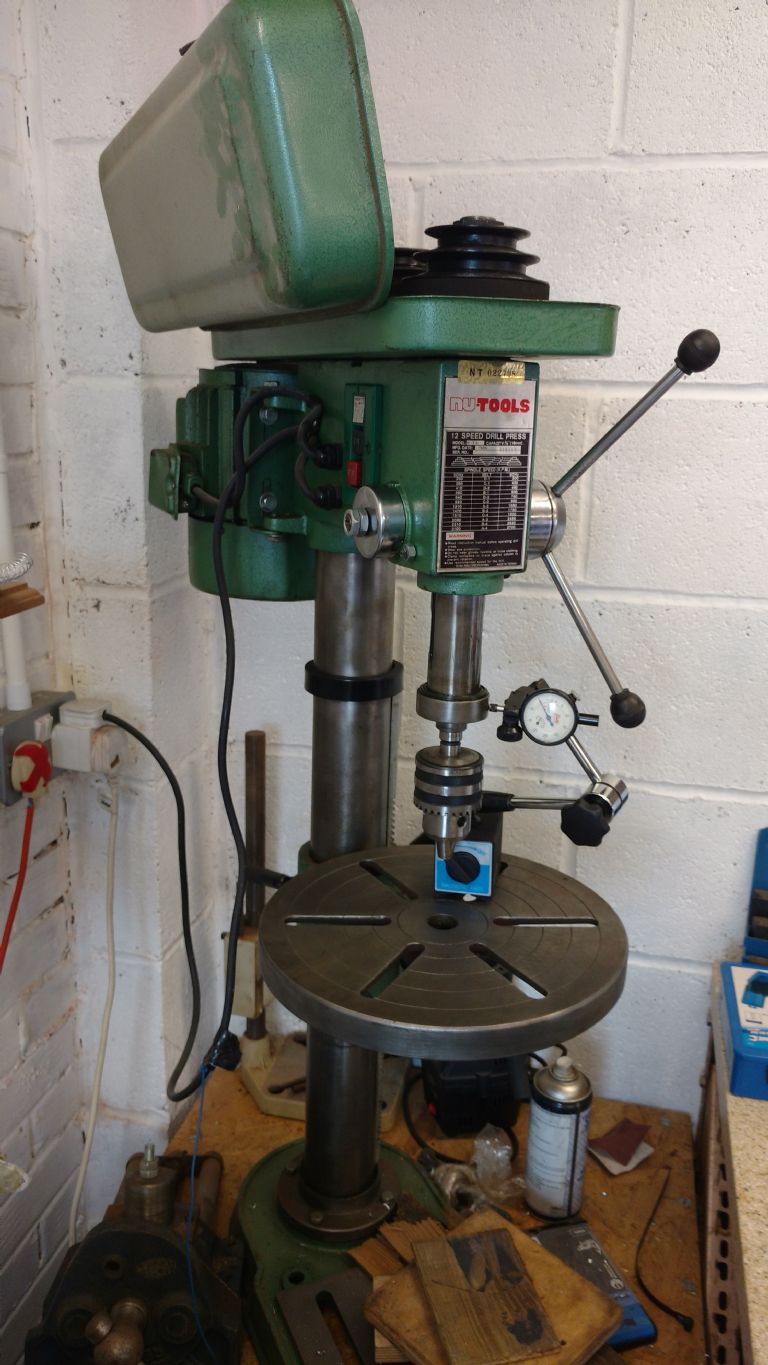Ttrees
Iroko loco!
Hello folks
I'm wanting to make a gib-like thing for the quill adjustment bolt on the pillar drill
after reading of someone doing so on this thread
https://www.model-engineer.co.uk/forums/postings.asp?th=128627
That little grub screw beside the return spring has two flats on the thread to engage into a slot in the quill.
Turns out there is quite a bit of space behind the casting,
so have gotten a dead bolt from a door lock, which hopefully might have a good bit of brass, if not then I will likely be making part from mild steel.
I am thinking of taking out that adjustment the screw provides, and creeping up on the perfect fit of the "tongued block",
I would like to tap this block so that it sits tight, i.e ....
so the screw doesn't push the plate away from behind, whatever an amount of one thread of a distance.
Is the answer to assemble again and then simply place the tap into the threads already there
Or is there another way to do this?
Can post some photos later
Thanks
Tom

I'm wanting to make a gib-like thing for the quill adjustment bolt on the pillar drill
after reading of someone doing so on this thread
https://www.model-engineer.co.uk/forums/postings.asp?th=128627
That little grub screw beside the return spring has two flats on the thread to engage into a slot in the quill.
Turns out there is quite a bit of space behind the casting,
so have gotten a dead bolt from a door lock, which hopefully might have a good bit of brass, if not then I will likely be making part from mild steel.
I am thinking of taking out that adjustment the screw provides, and creeping up on the perfect fit of the "tongued block",
I would like to tap this block so that it sits tight, i.e ....
so the screw doesn't push the plate away from behind, whatever an amount of one thread of a distance.
Is the answer to assemble again and then simply place the tap into the threads already there
Or is there another way to do this?
Can post some photos later
Thanks
Tom

Last edited:







































